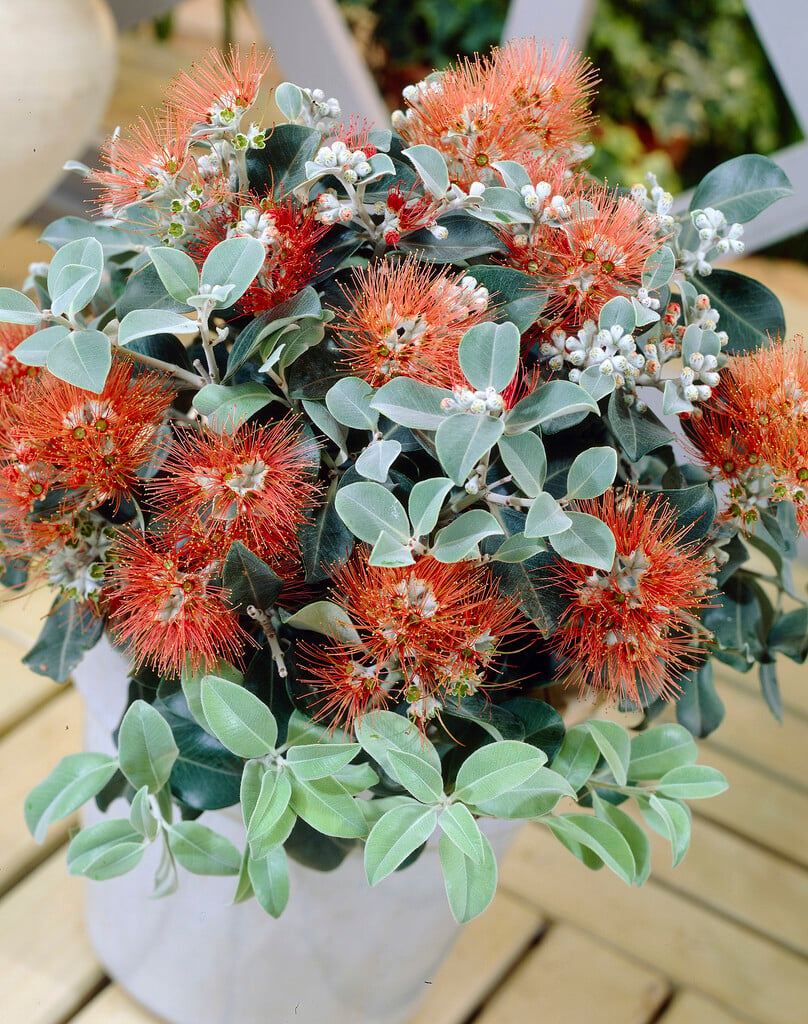Metrosideros excelsa
New Zealand Christmas tree
An erect, freely-branching, wide-spreading evergreen tree, to 20m tall in its native New Zealand, with semi-glossy, leathery, dark green leaves, densely white-felted beneath. In summer it produces brush-like, bright red flowers, composed of numerous tufts of stamens
Size
Ultimate height
Higher than 12 metresTime to ultimate height
more than 50 yearsUltimate spread
Wider than 8 metresGrowing conditions
Moisture
Moist but well–drained, Well–drainedpH
Acid, Alkaline, NeutralColour & scent
| Stem | Flower | Foliage | Fruit | |
| Spring | Green White | |||
|---|---|---|---|---|
| Summer | Red | Green White | ||
| Autumn | Green White | |||
| Winter | Green White |
Position
- Full sun
Aspect
South–facing or West–facing
Exposure
Sheltered Hardiness
H2Botanical details
- Family
- Myrtaceae
- Native to GB / Ireland
- No
- Foliage
- Evergreen
- Habit
- Spreading branched
- Genus
A genus of around 60 trees, shrubs and vines, most commonly grown for their showy, tufty predominantly red bottle brush-like flowers, which can also be orange, yellow or white. As they are frost tender, they are best suited as conservatory plants but can be seen outdoors in places such as the Scilly Isles or West Cornwall where frosts are extremely rare
- Name status
Correct
- Plant range
- New Zealand (North Island)
How to grow
Cultivation
Under glass, grow in peat-free, loam-based potting compost in full light, with shade from hot sun. In growth, water freely and apply a balanced liquid fertiliser monthly, water sparingly at other times. Plants become borderline hardy once the stems become woody at around 5 years
Propagation
Propagate by sowing seed in spring. Root semi-ripe cuttings with bottom heat in summer
Suggested planting locations and garden types
- Architectural
- City and courtyard gardens
- Coastal
- Patio and container plants
- Conservatory and greenhouse
Pruning
See pruning group 1; plants may need restrictive pruning under glass
Pests
May be susceptible to scale insects
Diseases
Generally disease-free
Get involved
The Royal Horticultural Society is the UK’s leading gardening charity. We aim to enrich everyone’s life through plants, and make the UK a greener and more beautiful place.
